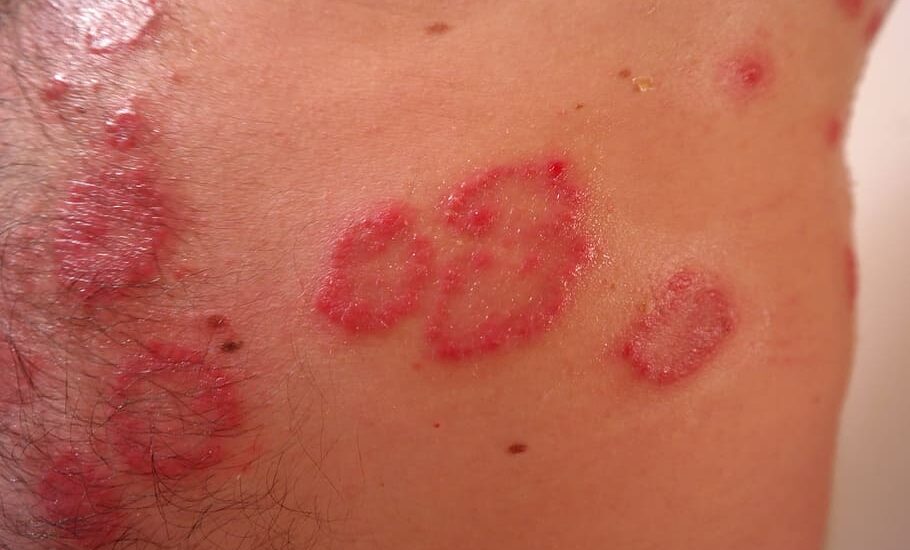How long does fungal infection on skin last? This comprehensive guide has the answer and will also reveal available treatment options, and preventative measures you can take.

Table of Contents
How Long Does Fungal Infection on Skin Last? Duration of Common Types
Fungal infections on the skin can vary in duration depending on several factors such as the type of infection, severity, and overall health. Let’s look at some of the most common types:
Tinea Pedis (Athlete’s Foot): This infection generally lasts between 1-4 weeks when treated appropriately. Left untreated, it can become chronic and persist for several months.
Tinea Cruris (Jock Itch): With effective treatment, the duration is typically 2-4 weeks. However, in severe cases or without treatment, it can last much longer.
Tinea Corporis (Ringworm): It usually lasts for 2-3 weeks with effective treatment. Untreated, it can spread to other parts of the body and become more prolonged. For authoritative information, visit the CDC’s guidelines on treating ringworm infection.
Factors Affecting Duration
Three main factors can influence the duration of a fungal skin infection:
Treatment Timeliness: The sooner you start treatment, the more likely you are to reduce the duration of the infection. Delaying treatment can allow the fungus to spread, requiring a longer period to resolve.
Severity of Infection: Mild infections often resolve more quickly than severe ones. Severe cases may require more potent medications and can take longer to fully heal.
Overall Health: If you have a weakened immune system due to conditions like diabetes or medications like corticosteroids, your body will take longer to fight off the infection.
Treatment Options
The effectiveness of treatment options will vary depending on the type and severity of the fungal infection. Here are the most commonly used treatments:
Topical Antifungals: These are creams, gels, or ointments applied directly to the skin. They are usually the first choice for mild to moderate infections.
Oral Medications: For severe or persistent infections that don’t respond to topical treatments, oral antifungal medications may be prescribed.
Hygiene Practices: Keeping the affected area clean and dry is crucial. Fungi thrive in moist, warm areas, so maintaining hygiene can assist in faster recovery.
This link provides further details on effective antifungal medicines.
Check out these other articles…
Black Skin After Fungal Infection: Causes & Solutions
Can Fungal Infection Cause Skin Discoloration? Answered
Dry Skin After Fungal Infection: How to Heal & Prevent
Skin Peeling After Fungal Infection: How to Deal with It
Red Skin After Fungal Infection: 3 Causes & Sure Solutions
Can Fungal Infection Cause Skin Rash? – Unraveling the Truth
Preventative Measures
Preventing future infections or re-infections is an integral part of managing skin fungal issues. Here are some preventative measures:
Keep the skin clean and dry: Fungi flourish in damp conditions. Regularly washing and thoroughly drying affected areas can help prevent an infection or stop it from spreading.
Avoid sharing personal items: Fungi can easily transfer through shared items like towels, footwear, and razors.
Wear moisture-wicking fabrics: Clothing that wicks moisture away from the skin can reduce the environment where fungi thrive.

